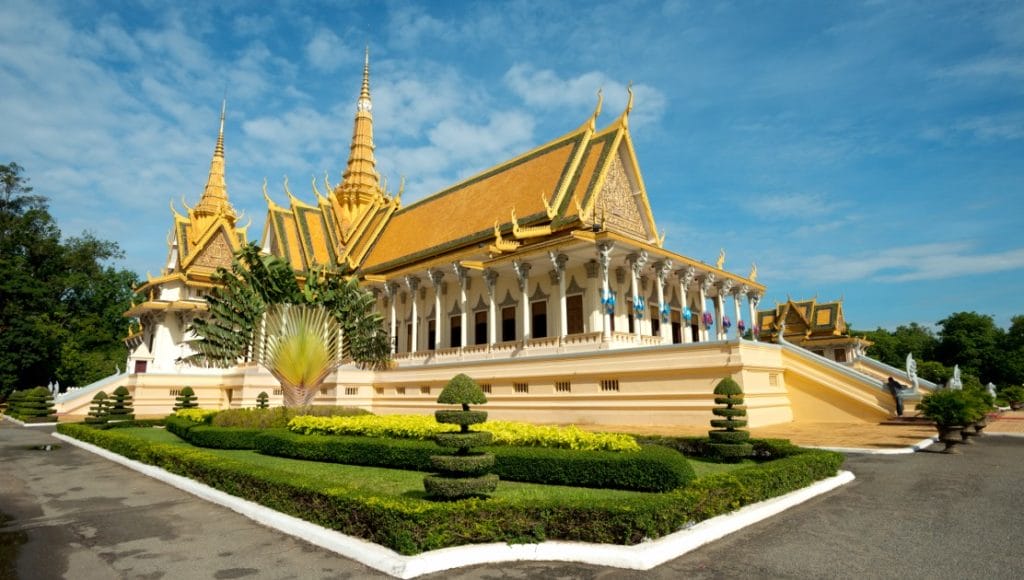
Capital of Cambodia and the heart of government PHNOM PENH is a captivating city of great charm and vitality, crisscrossed by broad tree-lined boulevards and dotted with old colonial villas. Situated in a virtually flat area at the confluence of the Tonle Sap, Bassac and Mekong rivers, the compact city hasn’t yet been overwhelmed by towering high-rise developments, and imparts a sense of openness and light.
Phnom Penh throbs with enterprise and energy, which makes it difficult to comprehend that a generation ago it was forcibly evacuated and left to ruin by the Khmer Rouge. Inevitably, and in spite of many improvements, some of the scars are still evident: side roads are pot-holed and strewn with rubble, some of the elegant villas are ruined beyond repair, and when it rains the antiquated drainage system backs up, flooding the roads.
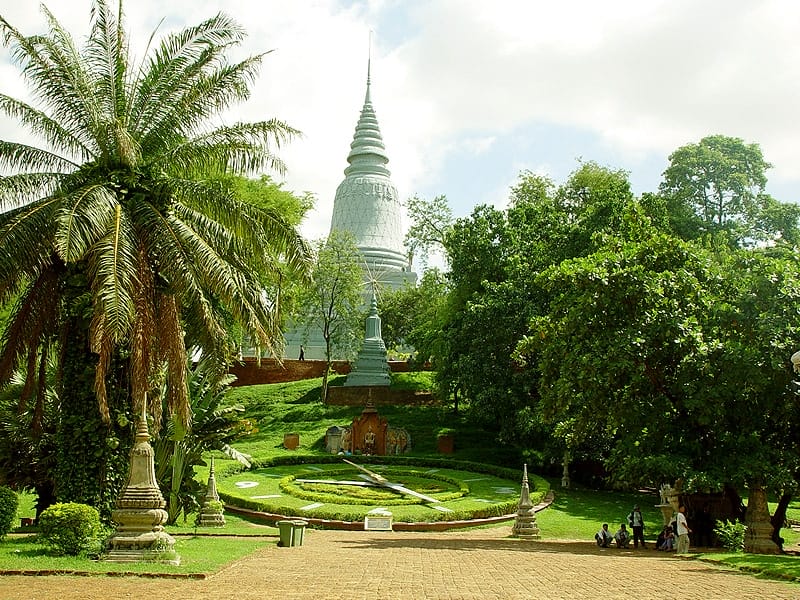
For tourists and locals alike, the lively riverfront – a wide grassy promenade that runs beside the Tonle Sap for nearly 2km – is the city’s focal point. In the evenings, Phnom Penh residents come here to take the air, snack on hawker food and enjoy the impromptu waterside entertainment; the strip also shows the city at its most cosmopolitan, lined with Western restaurants, cafés and bars. Three key tourist sights lie close by. Arguably the most impressive of the city’s attractions is the elegant complex housing the Royal Palace and Silver Pagoda. The palace’s distinctive four-faced spire towers above the pitched golden roofs of its Throne Hall, while the adjacent Silver Pagoda is home to a stunning collection of Buddha statues.
A block north of the palace is the National Museum , a dark-red building set in leafy surroundings housing a fabulous collection of ancient Cambodian sculpture dating back to as early as the sixth century. Also near the river are a number of lesser attractions, including Wat Ounalom , one of five pagodas founded during Phnom Penh’s first spell as the capital, and bustling hilltop Wat Phnom , one of the city’s prime pleasure spots, whose foundation is said to predate that of the city. The old French administrative area surrounds the hill on which Wat Phnom sits, with many finecolonial buildings , some restored. Also on many tourist itineraries, though for completely different reasons, is the Toul Sleng Genocide Museum south of the centre; a one-time school that became a centre for the torture of cadres who fell foul of the Pol Pot regime.
South of the centre, the area around Independence Monument is a plush residential district and contains further monuments and a restful park. Two disparate attractions lie in the far south of the city: a short moto ride from the centre is the disturbing Toul Sleng Genocide Museum, with its sobering evidence of the paranoia and inhumanity of Pol Pot and his followers; fifteen minutes’ walk further south, Psar Toul Tom Poung has the best souvenir-shopping in the country.
Many visitors stay just a couple of days in Phnom Penh before hopping on to Siem Reap and Angkor, or to the Vietnamese border crossings at Bavet and Chau Doc. There are, however, plenty of reasons to linger longer. The capital has the best shopping in the country, with a vast selection of souvenirs and crafts, and an excellent range of cuisines in its many restaurants. In addition, Phnom Penh offers a rare opportunity to get a glimpse of the traditional culture which the Khmer Rouge tried to wipe out, including classical dance and shadow puppetry.
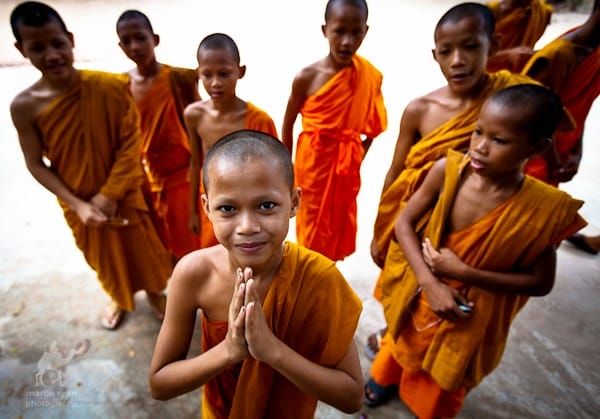
If you do linger, there are several rewarding day-trips from the capital out into the surrounding countryside. The most obvious is an excursion to the Angkor-era temples of Tonle Bati, featuring well-preserved wall carvings, and Phnom Chisor, stunningly located on top of a hill. Especially poignant if you’ve visited the Genocide Museum is a trip to the killing fields at Choeung Ek, where a memorial stupa contains the remains of some of those murdered here. Among other possible day-trips are the old capitals of Oudong and Lovek, while a smattering of rural villages and riverside pleasure spots make a striking contrast to the historical treasures and bustle of Phnom Penh.
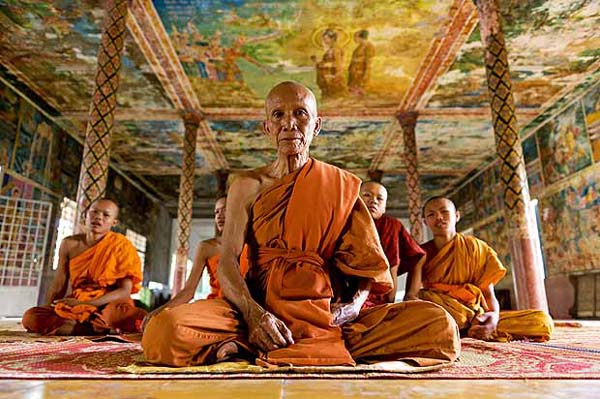
Brief History
Cambodian legend – passed down through so many generations that the Khmers regard it as fact – has it that in 1372 a wealthy widow, Daun Penh (Grandmother Penh), was strolling along the Chrap Chheam River (now the Tonle Sap), when she came across the hollow trunk of a koki tree washed up on the banks. Inside it she discovered five Buddha statues, four cast in bronze and one carved in stone. As a mark of respect, she created a sanctuary for the statues on the top of a low mound, which became known as Phnom Penh, literally the hill of Penh; in due course, the hill gave its name to the city that grew up around it.
Phnom Penh began its first stint as a capital in 1432, when King Ponhea Yat fled south from Angkor and the invading Siamese. He set up a royal palace, increased the height of Daun Penh’s hill and founded five monasteries – Wat Botum, Wat Koh, Wat Lanka, Wat Ounalom and Wat Phnom – all of which survive today. When Ponhea Yat died, his sons variously took succession, but for reasons that remain unclear, in the sixteenth century the court had moved out to Lovek, and later Oudong, and Phnom Penh reverted to being a fishing village.
Little is known of the subsequent three hundred years in Phnom Penh, though records left by missionaries indicate that by the seventeenth century a multicultural community of Asian and European traders had grown up along the banks of the Tonle Sap, and that Phnom Penh, with easy access by river to the ocean, had developed into a prosperous port, trading in gold, silk, incense, and in hides, bones, ivory and horn from elephants, rhinoceros and buffalo. Phnom Penh’s prosperity declined in the later part of the century, when the Vietnamese invaded the Mekong delta, and cut off Phnom Penh’s access to the sea.
The eighteenth century was a period of dynastic squabbles between pro-Thai and pro-Vietnamese factions of the royal family, and in 1770, Phnom Penh was actually burnt down by the Siamese, who proceeded to install a new king and take control of the country.
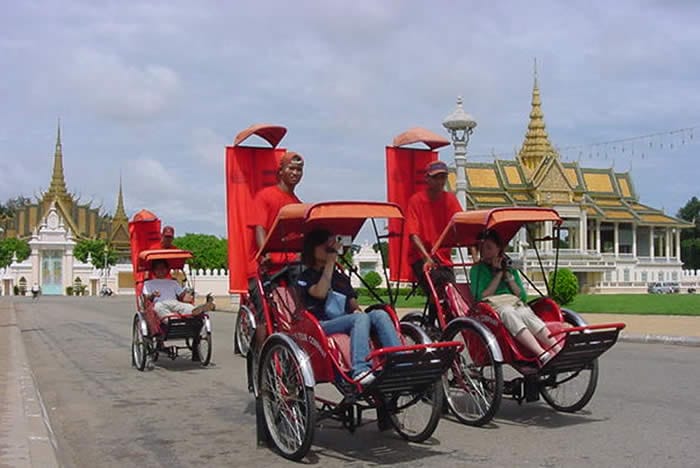
Late in the eighteenth century, the Vietnamese assumed suzerainty over Cambodia, and from 1808 all visits to Phnom Penh had to be approved by them. In 1812 Phnom Penh became the capital once again, though the court retreated to Oudong twice over the next fifty years amid continuing power-struggles between the Thais and Vietnamese.
In 1863, King Norodom (great-great-grandfather of the current king, Norodom Sihamoni), fearful of another Vietnamese invasion, signed a treaty for Cambodia to become a French protectorate. At the behest of the French, he uprooted the court from Oudong and the role of capital returned decisively to Phnom Penh, a place which the recently arrived French described as “an unsophisticated settlement made up of a string of thatched huts clustered along a single muddy track, the river banks crowded with the houseboats of fisher-folk”. In fact, an estimate of its population at the time put it at around 25,000. Despite Phnom Penh regaining its access to the sea (the Mekong delta was now under French control) it remained very much an outpost, with the French far more concerned with the development of Saigon.
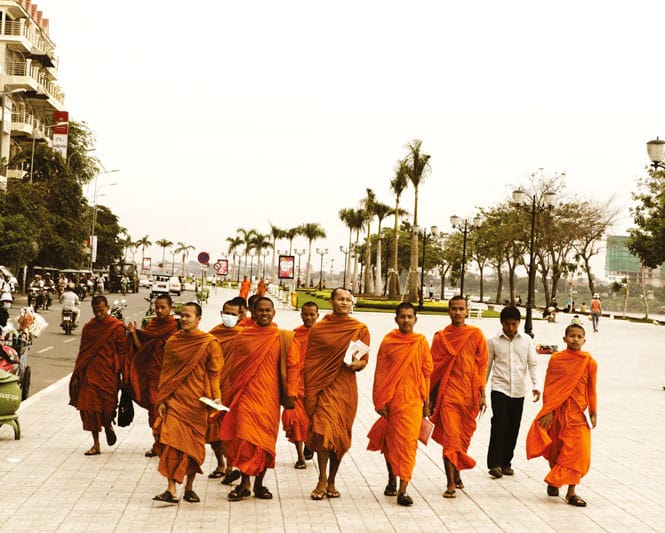
In 1889, a new Senior Resident, Hyun de Verneville, was appointed to the protectorate. Wanting to make Phnom Penh a place fit to be the French administrative centre in Cambodia, he created a chic colonial town. By 1900, roads had been laid out on a grid plan, a law court, public works and telegraph offices set up, and banks and schools built. A French quarter grew up in the area north of Wat Phnom, where imposing villas were built for the city’s French administrators and traders; Wat Phnom itself gained landscaped gardens and a zoo.
In the 1920s and 1930s, Phnom Penh grew prosperous. The road network was extended, facilitated by the infilling of drainage canals; the Mekong was dredged, making the city accessible to seagoing vessels; parks were created and communications improved. In 1932, the city’s train station was built and the railway line linking the capital to Battambang was completed. Foreign travellers were lured to Cambodia by exotic tales of hidden cities in the jungle.
The country’s first secondary school, Lycée Sisowath, opened in Phnom Penh in 1936, and slowly an educated elite developed, laying the foundations for later political changes. During World War II, the occupying Japanese allowed the French to continue running things and their impact on the city was relatively benign; in October 1941, after the Japanese had arrived, the coronation of Norodom Sihanouk went ahead pretty much as normal in Phnom Penh.
With independence from the French in 1954, Phnom Penh at last became a true seat of government and an educated middle class began to gain prominence; café society began to blossom, cinemas and theatres thrived, and motorbikes and cars took to the boulevards. In the mid-1960s a national sports venue, the Olympic Stadium, was built and world celebrities began to visit – Le Royal, the city’s premier hotel, played host to Jacqueline Kennedy.
The period of optimism was short-lived. Phnom Penh started to feel the effects of the Vietnam War in the late 1960s, when refugees began to flee the heavily-bombed border areas for the capital. The civil war of the early 1970s turned this exodus into a flood. Lon Nol’s forces fought a losing battle against the Khmer Rouge and, as the city came under siege, food became scarce despite US efforts to fly in supplies.
On April 17, 1975, the Khmer Rouge entered Phnom Penh. At first they were welcomed as harbingers of peace, but within hours the soldiers had ordered the population out of the capital. Reassurances that it was “just for a few days” were soon discredited, and as the people – the elderly, infirm and the dying among them – left carrying such possessions as they were able, the Khmer Rouge set about destroying the city. Buildings were ransacked, roofs blown off; even the National Bank was blown up in the Khmer Rouge’s contempt for money. For three years, eight months and twenty days Phnom Penh was a ghost town.

With the Vietnamese entry into Phnom Penh on January 7, 1979, both returnees and new settlers began to arrive – although many former inhabitants either could not or would not return, having lost everything and everyone. Those arriving in the city took up residence in the vacant buildings, and to this day many still live in these same properties. During the Vietnamese era, the capital remained impoverished and decrepit, with much of the incoming aid from the Soviet Union and India finding its way into the pockets of senior officials. By 1987, Vietnamese interest was waning, and by 1989 they had withdrawn from Cambodia.
The UN subsequently took charge of Cambodia, and by 1992 the country was flooded with highly paid UNTAC forces. The atmosphere in Phnom Penh became surreal: its infrastructure was still in tatters, electricity and water were spasmodic, telecommunications nonexistent and evening curfews were put in force, but the city boomed as hotels, restaurants and bars sprang up to keep the troops entertained. Many Phnom Penh residents got rich quick on the back of this – supplying prostitutes and drugs played a part – and the capital gained a reputation for being a free-rolling, lawless city, one which it is still trying to lay to rest.
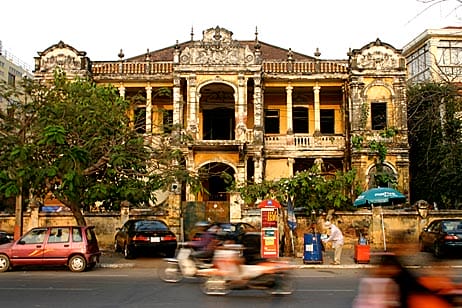
The city of today is slowly repairing the dereliction caused nearly three decades ago; roads are being rebuilt, the electricity is reliable and many of the charming colonial buildings are being restored. Alongside them, an increasing number of skyscrapers, high-rise apartment blocks and shopping malls are steadily peppering the horizon, particularly along Monivong and Sihanouk boulevards. With tourism firmly in its sights, the municipal government has set out elaborate plans to continue smartening up the city, ranging from dictating the colour in which buildings will be painted – creamy yellow – to evicting squatters and makeshift shops from areas designated for development.
Boeng Kak lake, for example, once a popular backpacker area, is now all but filled in and deserted to make way for a vast private development of hotels, apartments and luxury amenities. On the eastern end of Sihanouk Boulevard, Hun Sen Park and NagaWorld – a sprawling casino and hotel complex heavily invested in by Cambodia’s Prime Minister, Hun Sen – dominates the waterfront.
Aspirations of car-ownership are attested to by the increase in traffic, and exercise – or hat prahn – is an important part of daily life now for many, who congregate in the city’s parks in the late afternoon sun to join in impromptu aerobics classes or to march determinedly in laps, stretching their arms as they go.
Not so long ago the Cambodians abhorred banks, preferring instead to buy gold, but now even monks can be seen queuing for the ATM. Corruption is still rife; however, with a firmly re-established middle class, the city seems to be facing the future with renewed optimism.






